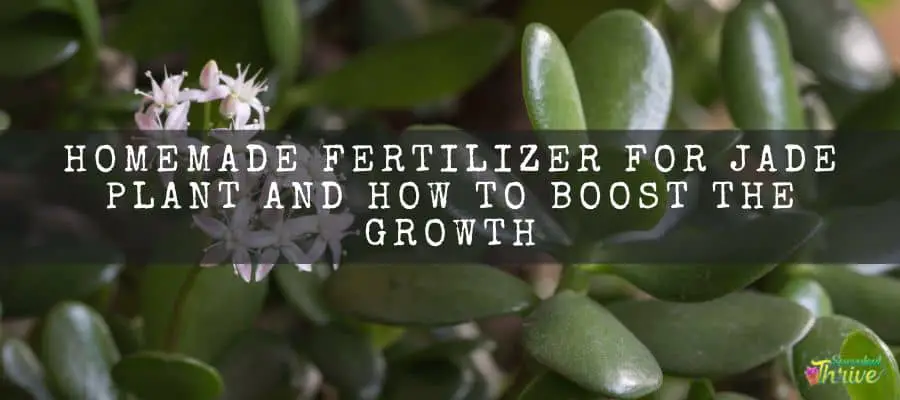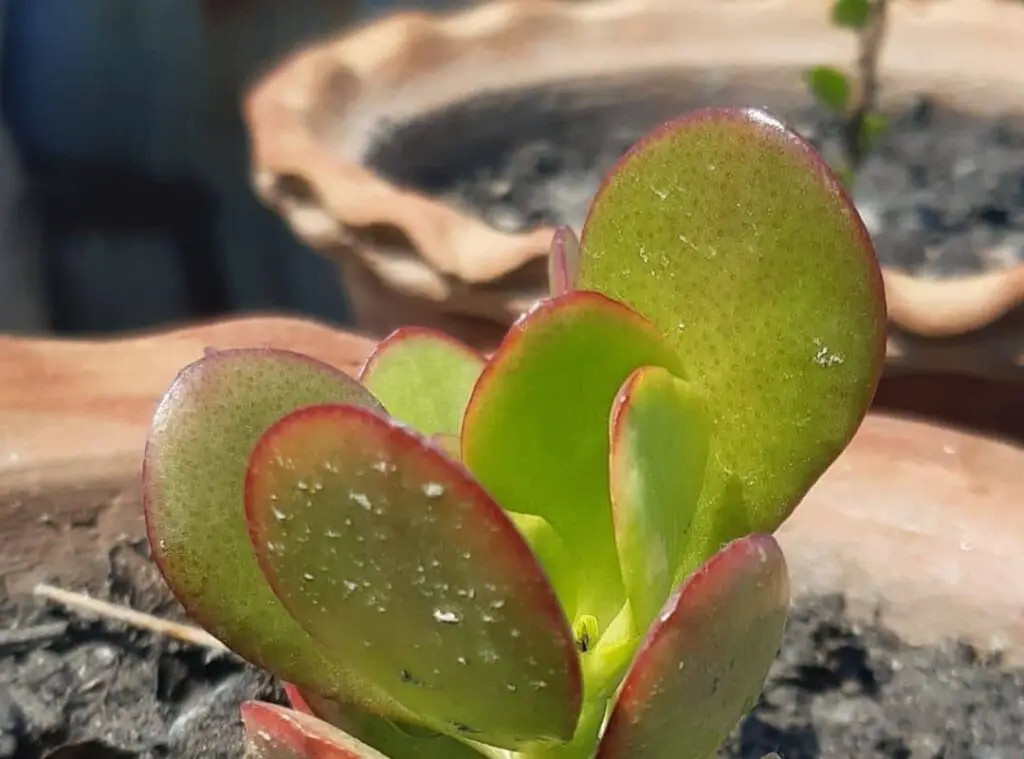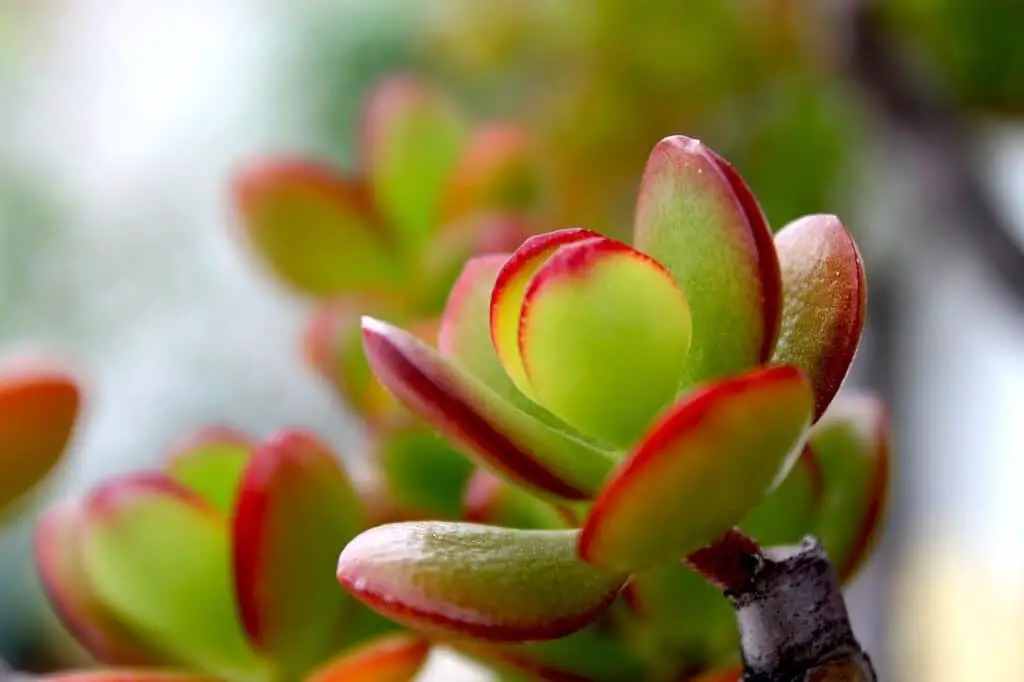Lovely Jade plants are deep green colored succulents and they may lose their deep green color due to several reasons. So, If your beloved Jade plants have lost their deep green color, it means the plants are in need of fertilizers. So, when it comes to fertilizers, chemical fertilizers may not be the best choice. Hence I recommend applying homemade fertilizer for jade plants all the time as it would be more beneficial and effective. Not only that, applying homemade fertilizers is cost-effective.
When you apply homemade fertilizers it would help to enhance the vigor in the plants. Further, it would help the plants to grow healthy too. So from this article, we will cover some of the best homemade fertilizers you could use to feed the Jade plants. Jade plants grow well indoors as well as outdoors. They usually live long and tend to look at a mini tree. Jade plants would be excellent choices if you have warm and dry conditions. This literally means they would be perfect for indoor conditions. They don’t tolerate colder weather conditions.

Best homemade fertilizer for jade plant
01. Coffee ground.
The coffee ground would be quite beneficial homemade fertilizer for jade plants. In other words, they are multipurpose fertilizers. You could use coffee grounds in two ways. First, you could simply spread coffee grounds on newspaper and then sprinkle them around the plant’s base. Next, you could make a liquid fertilizer with coffee grounds.
If you desire to apply the liquid coffee grounds, you need to first add balanced amounts of coffee and water. If I further elaborate on this, you need to add 6 ounces of coffee and add an equal amount of water into it. Literally, you need to mix them at the same ratio and mix them gently. Now, you are ready with the coffee ground fertilizers.
02. Epsom salt
Epsom salt mainly comprises Magnesium. They would strengthen the plant. Making Epsom salt fertilizer is very simple. You simply have to add 2 tablespoons of Epsom Salt to one gallon of water. You need to first arrange a clean gallon and fill it with clean water. You may either use tap water or filtered water to do this task.
After that, you can mix 2 tablespoons of Epsom salt in water. The salt would dissolve easily, and you will be able to make the Epsom salt fertilizer in a very short period. Bear in mind that Epsom salt in excess may badly impact the overall growth of the plants. So, always use them in the right amounts. I recommend using the Epsom soil monthly.
03. Green tea.
If you wish to make green tea fertilizer, you need to first take two green tea bags. Next, take a bucket or gallon and fill them with water. You could simply hang tea bags in water and tie their thread to the bucket’s lid so that you can separate the tea bags. Dip the tea bags and let them be covered with the lid for three to four days. After that, you could remove their lid and remove the tea bags and now you are ready to use them on the plants.
04. Eggshells
Eggshells have a rich component of Calcium. Further, they are slow-release fertilizers as well. If you wish to make an eggshell fertilizer, you need first to collect eggshells in an open jar. That way you could keep them unspoiled and unrotten. Once you collect an adequate amount of eggshells you could wither them under sunlight. If not, you may also put them in the oven and remove the moisture as well. When the eggshells are dry, you could simply grind them and make a powder out of them.
Next, you could store the powder and use them later. When applying all you need to do is just sprinkle some powder on the soil surface. Having said that you could use them as just crushed eggshells. However, the only concern about using them as crushed eggshells is that it would take a longer time to decompose shells into the soil, and it would take some time to show the benefits of fertilizing.
05. Banana peel.
Banana Peel has a rich component of Potassium. In addition to that, it would also provide NPK and some other nutrients in small amounts too. To make the fertilizer, you should cut the Banana peels into small pieces and place them in a shallow bowl. Next, you could add water to the bowl and locate it in a shady spot for about 3 to 4 days. After about four days, you could see the water turning brown. You may strain the peels from water and apply them weekly on your plants.
06. Fish tank water.
Fish tank water comprises nitrogen, potassium, phosphorus and some other microbes as well. They would allow the plants to absorb the nutrients quickly. In fact, using fish tank water is the easiest way of making homemade fertilizers. When applying you may apply them as they are or even add more water to weaken their strength of it. So, keep in mind to save this liquid whenever you are changing the tank water.

How often should you fertilize a jade plant?
You could fertilize the plants once every month as they don’t require a lot of fertilization. However, during the other seasons, you could feed them just once every three to four months. These are slow growers and don’t depend a lot on fertilizers. They would usually actively grow in summer. Ensure that you feed the plants in winter only if they don’t receive sufficient sunlight.
How to apply fertilizer
The way of applying the fertilizers depends on the type of fertilizers you use for the plants. If you have a water-soluble fertilizer, you need to mix it with water as appropriate. On the other hand, if it is a solid fertilizer, you may directly apply it on the soil first and then add water later on.
Advantages and disadvantages of homemade fertilizers
It is always best to use homemade fertilizers on Jade plants as they are not that costly. In addition to that, it would be quite effective to use homemade fertilizers on the plants as well. You may easily find these materials at your home and you can easily make these at home. Keep in mind that Jade plants would thrive well with minimum fertilizers and with moderate watering.
Homemade fertilizers would balance the soil nutrient and it would enhance the growth of the plants naturally. There will be no chemical intervention in the decomposition of these fertilizers. Since they don’t release any artificial compounds, homemade fertilizers would not upset the balance of the soil mix. They would release the nutrients slowly at a sustainable rate. More importantly, they would avoid any potential of having over-fertilization too.
Having said that, there are some disadvantages to using home fertilizers too. In fact, some of these homemade fertilizers don’t contain primary nutrients such as Nitrogen, phosphorus, potassium etc. furthermore they would take a long time to show up the benefits of fertilizing. When you use homemade fertilizer, you will have to depend a lot on the microorganisms In the soil.
When should I feed my jade plant?
You need to feed the jade plants when there is a dropping stunted or leggy growth of the plants. Additionally, if you spot your jade plants having developed yellowed leaves and weak stems, it literally means you need to feed the Jade plants. Jade plants usually grow on rocky slopes in hot and arid areas in South Africa. There they would usually get a soil mix that is slightly acidic. So, these are renowned as slow-growing plants and even if you feed the plants they would tend to grow at a slightly slower pace.
That said if you spot your beloved jade plants having developed a drooping stunted leggy growth it literally means the plants are not getting the required nourishment. You would see the plant’s leaves droop, become small, and stunted as well. Further, the stems would be slender and grow leggy as well. Having said that, these symptoms could also be signs of a lack of sunlight as well.
Yellowed leaves are yet another sign of a lack of nutrients. Having said that it could also be a symptom of under-watering or over-watering. However, if you think you had watered the plants well and it would be most probably due to a lack of nutrients. If your precious jade plants are developing vibrant green-colored leaves, it literally means the plants are producing sufficient chlorophyll to conduct the photosynthesis process and they are growing healthily.
Weak stems and weak roots are other signs of a lack of fertilizers. Literally, if the plants are lacking sufficient phosphorus levels, their roots would grow weakly. To ascertain that you could lift the plant lightly from the soil and see if the stems are hard or loose. If the stems are loose, it literally means the roots are not strong.

Related questions
What is the best fertilizer for the jade plant?
A fertilizer that has an NPK ratio of 10- 20-10 fertilizer would be the best for the Jade plants. It is vital that you provide a high phosphorus amount in the fertilizers as it would help the plant’s roots to grow vigorously.
How do I make my jade plant stronger?
Supplying sufficient sunlight exposure is very crucial when making a jade plant stronger. So, first of all, you need to place the plants in full sunlight where the plants will be able to absorb full sunlight for about 5-6 hours. A temperature range of around 65- and 75 degrees Fahrenheit in the daytime and a temperature range of around 50 and 550F at night would work well with the plants. Do not place the plants closer to the drafts as it would make the plants grow weakly. Once you adhere to all these car tips, it would help the plants grow strong and firm.
Is coffee powder good for the jade plant?
Coffee powder is good for jade plants as they are acidic. Jade plants are fond of growing in acidic soil and they contain several nutrients such as Nitrogen, potassium, Magnesium etc. These are all crucial nutrients for the vigorous growth of jade plants. In addition to that, if you had watered the plants with tap water, they may have a pH level of around 8. So, once you use coffee powder it would help to balance out the pH level of the soil as well.
Is baking soda good for a jade plant?
You could use baking soda to get rid of the powdery mildew condition of Jade plants.
Is tea good for jade plants?
Yes, they are certainly good. Having said that I don’t recommend using these in large amounts as it would be unhealthy for the plants. That is because these are acidic elements and if you supply them in excess, it will make the soil more acidic
How do you keep a jade plant shiny?
You may simply wipe the jade plant leaves by using a soft lint-free cloth. However, ensure that it is moistened with lukewarm water. Do not use sponges or any other hard material cloth as it would damage the plant leaves. Needless to mention that you should practice all the basic care tips also to ensure that they grow healthily.
Conclusion
To conclude, making homemade fertilizers is very simple. Having said that, you need to ensure that you apply them in the right quantities and in the right way so that the plants would be effectively benefitted from them. Using homemade fertilizers is effective and economically beneficial as well. When you see the result of using homemade fertilizers on jade plants, you could set up a routine for that and keep feeding the plants accordingly. So do think of these homemade fertilizers when feeding the jade plants.
Read Next : Adromischus Festivus | Spectacular Succulent |


